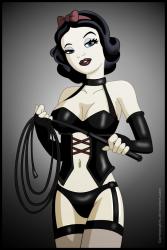1




















| Thumbs Up |
| Received: 35,722 Given: 17,037 |

Chemistry Advent 2017
Source: http://www.compoundchem.com/2017advent/
1 December – Chocolate Chemistry
2 December – Christmas tree aroma
3 December – Gingerbread chemistry
4 December – Candy cane chemistry
5 December – Poinsettia indicators
6 December – Silver baubles
7 December – Fake snow
8 December – Mulled wine chemistry
9 December – Poisonous Mistletoe
10 December – Christmas lights
11 December – The relighting candle trick
12 December – Snow globe chemistry
13 December – Orange peel flamethrowers
14 December – Presents and tape
15 December – Holly & Ivy
16 December – Christmas Crackers
17 December – Brussels sprouts
18 December – Flaming Christmas puddings
19 December – The composition of Christmas bells



















| Thumbs Up |
| Received: 35,722 Given: 17,037 |

20 December – Frankincense aroma
21 December – Turkey chemistry
22 December – Cranberry chemistry
23 December – The smell of winter fires
24 December – The chemical history of tinsel



















| Thumbs Up |
| Received: 35,722 Given: 17,037 |

31 December - The Chemistry of Champagne
With New Year’s Eve upcoming, a large number of people will celebrate by popping open a bottle of champagne. The bubbles in your glass may seem simple enough, but there’s actually a wealth of interesting chemistry behind them – chemistry that’s vital for the perceived taste and aroma of the wine. There’s a lot more to the bubbles than you might think, and this post picks apart some of the chemical compounds involved.
The obvious chemical contributor that causes the bubbles to appear in champagne in the first place is carbon dioxide, which originates from the fermentation process. Champagne is unusual amongst wines, in that it undergoes two fermentations – one before bottling, and one in the bottle before it is drunk. The second fermentation produces the carbon dioxide and ethanol that are vital for the finished product.
An average 0.75 litre bottle of champagne contains around 7.5 grams of dissolved carbon dioxide – this may not sound like a lot, but when the bottle is opened, it would release around 5 litres of carbon dioxide gas if you allowed it to bubble until flat. In an individual champagne flute, assuming a volume of around 0.1 litres, this would equate to approximately 20 million bubbles. This isn’t even the bulk of the carbon dioxide – only around 20% of it escapes from the wine in the form of bubbles, with the other 80% escaping via direct diffusion.
The bubbles themselves need nucleation sites to form in the first place. Tiny cellulose fibres, which are either deposited from the air or left over from when glasses have been wiped with towels, allow the trapping of gas molecules as the glass is filled. The dissolved carbon dioxide wouldn’t usually have the energy required to push through the intermolecular interactions of the liquid molecules, but the pockets of gas lower the energy required, thus allowing bubbles to form. They can also form if the glass has had a specially etched portion during manufacture.
As well as giving champagne its characteristic fizz, studies have shown that the bubbles are also vital contributors to the flavour and aroma of the wine. They can pull some compounds in the wine with them as they rise; when they reach the surface and burst, these compounds can be thrown into the air within tiny liquid droplets. Scientists have analysed the composition of these droplets, collected by holding a microscope slide over a champagne glass then transferring them to a solution which was then run through a spectrometer to identify compounds present.
A large number of flavour and aroma compounds were discovered in the droplets, a selection of which are shown in the graphic. Hundreds of components were present, with some still yet to be identified, but interestingly, the composition of these droplets differs from that of the main body of the wine. This is due to the fact that only certain molecules are pulled up to the surface by the bubbles, influencing the droplet composition. The study’s authors state that many of these compounds contribute to the aroma of the champagne, and the droplets dispersed by the bursting of the bubbles are therefore vital for both the aroma and flavour of the wine.
These are, of course, merely a selection of the many compounds found in champagne.
There are currently 1 users browsing this thread. (0 members and 1 guests)
Bookmarks